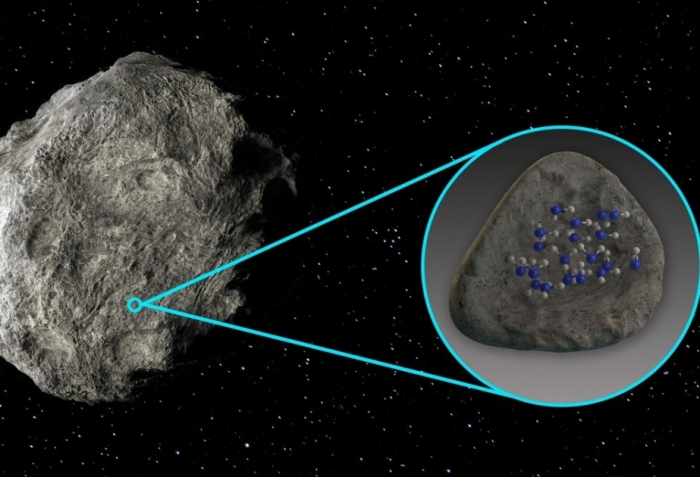Scientists made the discovery using data gathered by NASA's now-retired SOFIA airborne observatory.
Water molecules have been detected on the surface of an asteroid for the first time, revealing new clues about the distribution of water in our solar system, according to Space.
Scientists studied four silicate-rich asteroids using data gathered by the now-retired Stratospheric Observatory for Infrared Astronomy (SOFIA), a telescope-outfitted plane operated by NASA and the German Aerospace Center.
Observations by SOFIA's Faint Object InfraRed Camera (FORCAST) instrument showed that two of the asteroids — named Iris and Massalia — exhibit a specific wavelength of light that indicated the presence of water molecules at their surface, a new study reports.
"Asteroids are leftovers from the planetary formation process, so their compositions vary depending on where they formed in the solar nebula," study lead author Anicia Arredondo, of the Southwest Research Institute in San Antonio, said in a statement. "Of particular interest is the distribution of water on asteroids, because that can shed light on how water was delivered to Earth."
While water molecules have previously been detected in asteroid samples returned to Earth, this is the first time that water molecules have been found on the surface of an asteroid in space. In a previous study, SOFIA found similar traces of water on the surface of the moon, in one of the largest craters in its southern hemisphere.
"We detected a feature that is unambiguously attributed to molecular water on the asteroids Iris and Massalia," Arredondo said in the statement. "We based our research on the success of the team that found molecular water on the sunlit surface of the moon. We thought we could use SOFIA to find this spectral signature on other bodies."
SOFIA observations of the moon revealed roughly the equivalent of a 12-ounce bottle of water trapped in a cubic meter of soil spread across the lunar surface, chemically bound in minerals. In the new study, the SwRI scientists found that the abundance of water on the two asteroids was similar to that seen on the moon and could also be bound to minerals, like on the lunar surface, or adsorbed in silicate, the researchers said.
Iris and Massalia, which measure 124 miles (199 kilometers) and 84 miles (135 km) in diameter, respectively, have similar orbits, traveling an average distance of 2.39 astronomical units (AU), or sun-Earth distances, from the sun.
"Anhydrous, or dry, silicate asteroids form close to the sun while icy materials coalesce farther out," according to the statement. That’s because any water present on the surface of objects in the inner solar system was thought to evaporate from the heat of the sun. "Understanding the location of asteroids and their compositions tells us how materials in the solar nebula were distributed and have evolved since formation."
Therefore, the findings at Iris and Massalia suggest that some silicate asteroids can conserve some of their water over the eons and may be more commonly found in the inner solar system than previously thought. In fact, asteroids are believed to be the primary source of Earth's water, providing the necessary elements for life as we know it. Understanding of the distribution of water through space will help researchers better assess where to search for other forms of potential life, both in our solar system and beyond.
Their findings were published Feb. 12 in the Planetary Science Journal.
More about:
















































